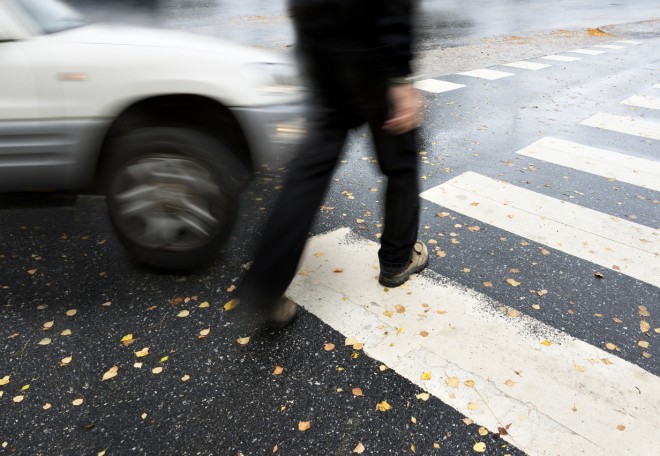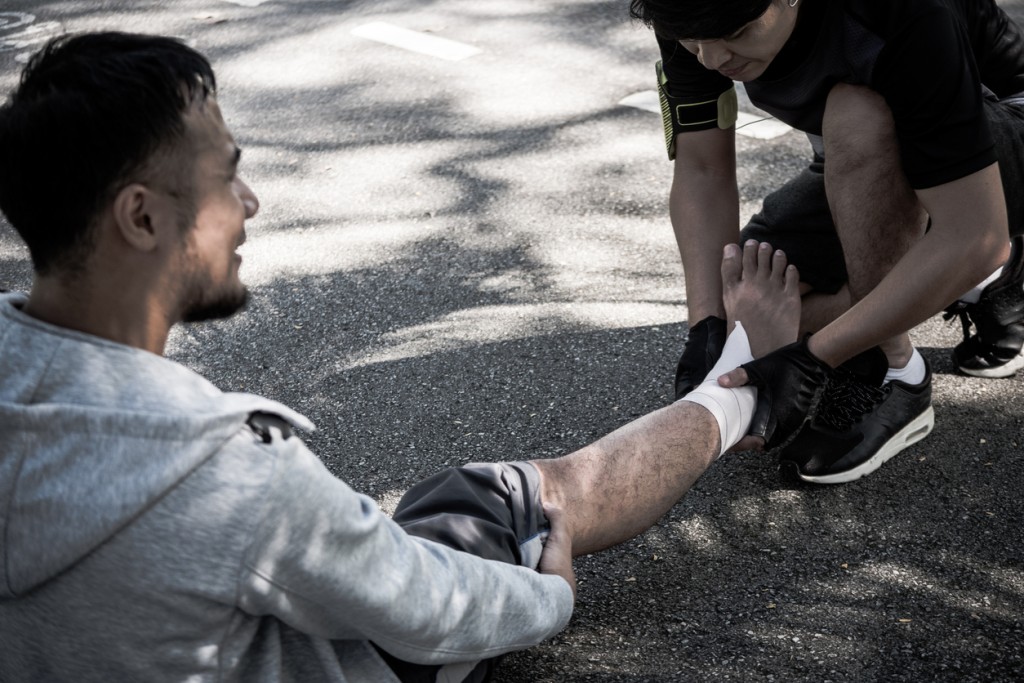The chaos of being injured in hit and run accident in Oregon is more than just a sudden impact—it can spiral into a complex maze of legal and insurance challenges. Victims are often left with physical injuries, emotional trauma, and financial burdens, all while the responsible driver disappears. In such cases, understanding your rights and insurance options becomes absolutely vital. Oregon’s laws provide certain protections for hit-and-run victims, but navigating them without a clear grasp of how coverage works could leave crucial compensation on the table.
This guide serves as a detailed roadmap for anyone who finds themselves injured in hit and run accident in Oregon, explaining everything from applicable insurance policies to filing a claim and seeking recovery when the at-fault driver cannot be found.
What Qualifies as a Hit and Run Accident in Oregon?
Being injured in hit and run accident in Oregon means the driver responsible for causing the crash fled the scene without stopping to exchange contact and insurance information. Under ORS 811.700, it’s a criminal offense in Oregon for any driver involved in a collision to leave without rendering aid or providing necessary identification, regardless of who is at fault.
When the fleeing driver cannot be identified, victims are left in a legally vulnerable position. This scenario affects how insurance policies pay out, shifts liability, and often requires victims to prove their damages without the cooperation of the other party. Therefore, the state classifies hit-and-run incidents seriously—both from a criminal justice and civil liability standpoint.
The Role of Uninsured Motorist Coverage in Hit and Run Claims
One of the most critical insurance policies for anyone injured in hit and run accident in Oregon is Uninsured Motorist (UM) coverage. Oregon law mandates that all auto insurance policies sold in the state include UM coverage at minimum limits of $25,000 per person and $50,000 per accident.
Since the at-fault driver in a hit-and-run is typically never identified, that driver is considered “uninsured” under Oregon law. Therefore, your own UM policy steps in to cover damages like medical expenses, lost wages, and pain and suffering.
It’s crucial to understand that even though your own insurance is footing the bill, your provider may still treat the process adversarially. You will need to submit thorough documentation of your injuries and may have to negotiate or even litigate to receive full compensation.
Underinsured vs. Uninsured Motorist Coverage in Oregon
Though many drivers purchase both uninsured and underinsured motorist coverage, only the uninsured component typically applies when you are injured in hit and run accident in Oregon. Underinsured motorist (UIM) coverage comes into play only if the at-fault driver has insufficient liability coverage. In a true hit-and-run case, the driver’s identity and insurance status remain unknown, which automatically triggers the UM portion of your policy.
While both types of coverage are essential to protect against financial fallout from collisions, understanding the legal difference is key to knowing what you can claim.

Personal Injury Protection (PIP) and Medical Costs
In Oregon, all auto insurance policies must include Personal Injury Protection (PIP), which pays for medical expenses regardless of fault. If you’re injured in hit and run accident in Oregon, your PIP coverage can be an immediate lifeline. The law requires a minimum of $15,000 in PIP benefits, which can cover medical bills, lost income, and even some essential services like household help if you’re incapacitated.
PIP coverage usually kicks in first, followed by UM coverage once PIP is exhausted. However, insurers may attempt to delay or deny claims if paperwork isn’t submitted properly or timelines are missed. That’s why documenting everything from the very first moment matters.
Timelines and Deadlines to File a Hit and Run Claim in Oregon
For those injured in hit and run accident in Oregon, strict deadlines can make or break your chance at recovering compensation. Oregon law requires that you report a hit-and-run accident to your insurance carrier within 72 hours to preserve your right to use uninsured motorist coverage.
Additionally, under the Oregon statute of limitations, personal injury claims must be filed within two years from the date of the accident. This window is non-negotiable. If you delay action—even while searching for the fleeing driver—you may lose all legal rights to compensation.
Filing a Police Report and Legal Documentation
Even if you believe your injuries are minor, filing an official police report is a critical step after being injured in hit and run accident in Oregon. Not only is it legally required, but the report provides foundational evidence for your insurance claim. It documents the location, circumstances, witness statements, and any physical evidence.
Insurance companies rely heavily on the content of this report when evaluating your claim. If the report is vague or incomplete, they may argue the event wasn’t a legitimate hit and run. In some cases, insurers deny coverage altogether if the incident wasn’t formally reported to authorities.
Surveillance Footage and Witnesses in Hit and Run Investigations
Technology plays an increasingly central role in cases involving victims injured in hit and run accident in Oregon. Surveillance footage from businesses or residences near the crash site can sometimes capture identifying information such as a license plate or make and model. Additionally, bystanders can offer crucial testimony—even short descriptions of the vehicle or driver can guide investigations.
You should request video footage promptly, as many cameras automatically delete data after a few days. Law enforcement and legal professionals often rely on this type of evidence to strengthen both criminal investigations and civil claims.

The Burden of Proof for Insurance Compensation
While insurance is meant to protect those injured in hit and run accident in Oregon, the reality is that you carry the burden of proving that the accident occurred as described. Insurers often scrutinize such claims closely due to the absence of another driver’s testimony. You will need to show:
-
Proof of physical injuries through medical records
-
A filed police report
-
Evidence the crash involved another vehicle
-
Possibly photographs, dashcam footage, or eyewitness statements
Without strong evidence, your claim may be denied or significantly undervalued. Insurance companies may even accuse you of fraud or self-infliction of damage.
Legal Consequences for Fleeing Drivers in Oregon
Although this guide focuses on victim rights, it’s important to understand that Oregon imposes criminal penalties on drivers who flee the scene of a collision. Under ORS 811.705, a hit-and-run involving injuries is classified as a Class C felony, carrying potential prison time and large fines.
While criminal proceedings are separate from civil compensation, the outcome of a criminal case—if the driver is eventually identified—can sometimes support a civil claim for damages. For example, a conviction may serve as evidence of liability in court.
Claim Denials and Bad Faith Insurance Practices
Unfortunately, being injured in hit and run accident in Oregon does not guarantee fair treatment from your own insurance company. Some insurers may delay investigations, underpay claims, or engage in bad faith tactics to minimize payouts. In such cases, policyholders have the right to bring a bad faith claim under Oregon law, which could result in additional compensation beyond the original damages.
Indicators of bad faith include unjustified denial of coverage, excessive delays, or refusal to communicate. Keeping a detailed record of all communications and submitting complete, timely documentation is your best defense.
How Comparative Negligence Affects Oregon Hit and Run Claims
Oregon follows a modified comparative negligence rule. This means if a court finds you partially at fault for the crash, your compensation could be reduced proportionally. However, in hit-and-run cases where the other party is unknown and unavailable to defend themselves, comparative negligence arguments may arise through your insurance provider instead.
Even when injured in hit and run accident in Oregon, you may face questions like: Were you speeding? Did you fail to signal? These tactics are used to justify reduced settlement amounts.

Documenting the Scene and Medical Evidence
Capturing detailed documentation right after the crash is essential. When you’re injured in hit and run accident in Oregon, your smartphone becomes one of your most powerful tools. Take photographs of vehicle damage, debris, skid marks, and your injuries. Keep all medical records, prescriptions, and follow-up appointments documented.
This type of concrete evidence plays a central role in building your case—whether you negotiate with your insurer or end up litigating your claim in court. Your ability to present a detailed timeline of your injuries and their impact can directly influence the outcome.
Coordination Between Police and Insurance Investigators
When you’re injured in hit and run accident in Oregon, two parallel investigations begin—one by law enforcement and another by your insurance provider. These investigations may share overlapping evidence but serve different purposes. While police focus on identifying and charging the offender, insurers evaluate the financial extent of your losses.
You should cooperate with both, but maintain awareness that insurance adjusters are not neutral observers. Their loyalty is to their employer, not to your recovery. Providing clear, factual, and consistent statements to both entities helps protect your interests.
Legitimate Legal Claims Can Still Be Undermined Without Evidence
Too often, legitimate claims by those injured in hit and run accident in Oregon are weakened not by fraud, but by lack of preparation. It’s not enough to know you’re in the right—you must show you are. Oregon’s legal system and insurance framework rely on demonstrable proof, not just intuition or memory.
Claims that lack supporting evidence are at risk of underpayment or denial. This reinforces the need for early, thorough documentation at every step, from the crash scene to medical recovery.
When to Consider Legal Action Against Insurers
If your claim is undervalued, delayed, or denied without reasonable cause, you may have grounds to sue your insurance provider. Victims injured in hit and run accident in Oregon often file lawsuits when UM coverage is wrongfully withheld. Oregon courts recognize the contractual duty of insurers to act in good faith, and violating this duty can lead to damages beyond the original claim.
Legal action is a last resort, but in some situations, it’s the only way to secure the compensation you legally deserve. Keeping all correspondence, evidence, and claim documentation organized is key to making such a step effective.
Understanding Arbitration Clauses in Oregon Auto Insurance Policies
Many auto insurance policies in Oregon contain binding arbitration clauses for UM disputes. If you’re injured in hit and run accident in Oregon and disagree with the insurer over compensation, you may be required to resolve the dispute through arbitration instead of traditional court.
Arbitration can be faster and less formal, but it also limits certain procedural rights. Understanding the implications of any arbitration agreement within your policy is critical before pursuing a formal challenge.
Key Takeaways from Oregon’s Hit and Run Insurance Landscape
The laws and insurance protocols governing hit and run accidents in Oregon are designed to ensure a basic level of protection—but they are far from foolproof. The most vulnerable are often those who don’t act quickly or fail to understand what is required.
If you’ve been injured in hit and run accident in Oregon, don’t assume that insurance companies will act in your best interest without pressure. The more informed and prepared you are, the better your odds of securing fair compensation.
For a complete breakdown of what happens in these cases, refer to this in-depth guide on hit and run accident claims in Oregon which covers additional legal scenarios and protections you should know.
Broader Legal Considerations for Those Injured in Hit and Run Accident in Oregon
If your case involves overlapping legal complications, such as attorney negligence or failure to advise on your insurance options, knowing how to document evidence for a legal malpractice claim can be just as important when pursuing compensation after a hit and run incident.
Additionally, for a more detailed understanding of how Oregon law penalizes hit-and-run drivers, you can refer to the Oregon Legislative Information System’s entry on ORS 811.700 at https://www.oregonlegislature.gov/bills_laws/ors/ors811.html, which outlines the statutory obligations and penalties involved.
